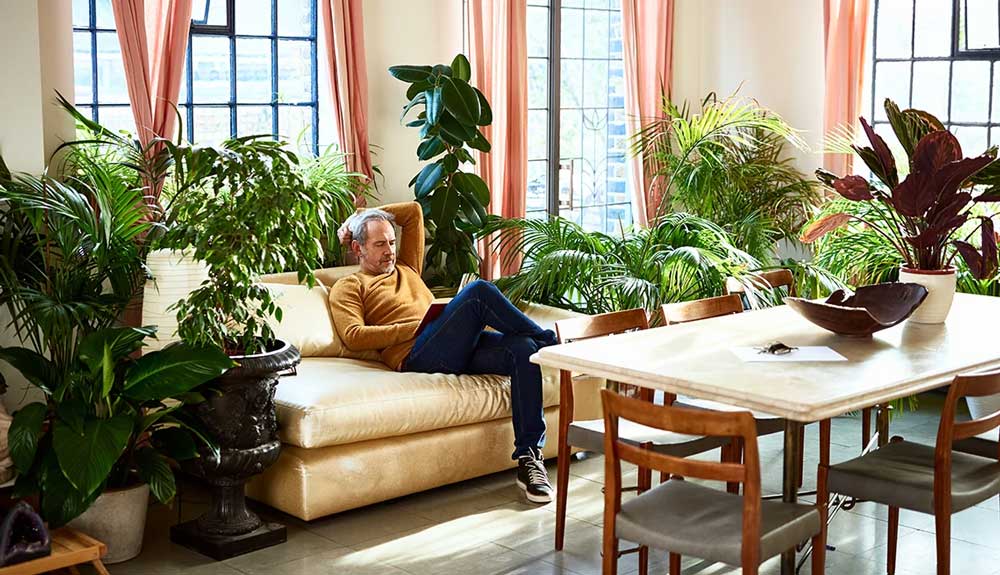Incorporating Indoor Plants into Your Home Decor
Introduction
In recent years, indoor plants have become an essential part of home decor, and for good reason. Beyond their undeniable beauty, they bring a refreshing touch of nature into our living spaces, creating a calming and inviting atmosphere. Incorporating greenery into your home not only enhances aesthetic appeal but also offers numerous health benefits. Indoor plants improve air quality by filtering toxins, increase humidity, and have been shown to reduce stress and boost overall well-being.
As we step into 2025, the trend of integrating plants into interior design continues to grow stronger. Whether you live in a spacious house or a compact apartment, plants can transform any space into a serene oasis. This article will guide you through selecting the perfect plants for your home, styling ideas, and essential care tips to keep your indoor jungle thriving.
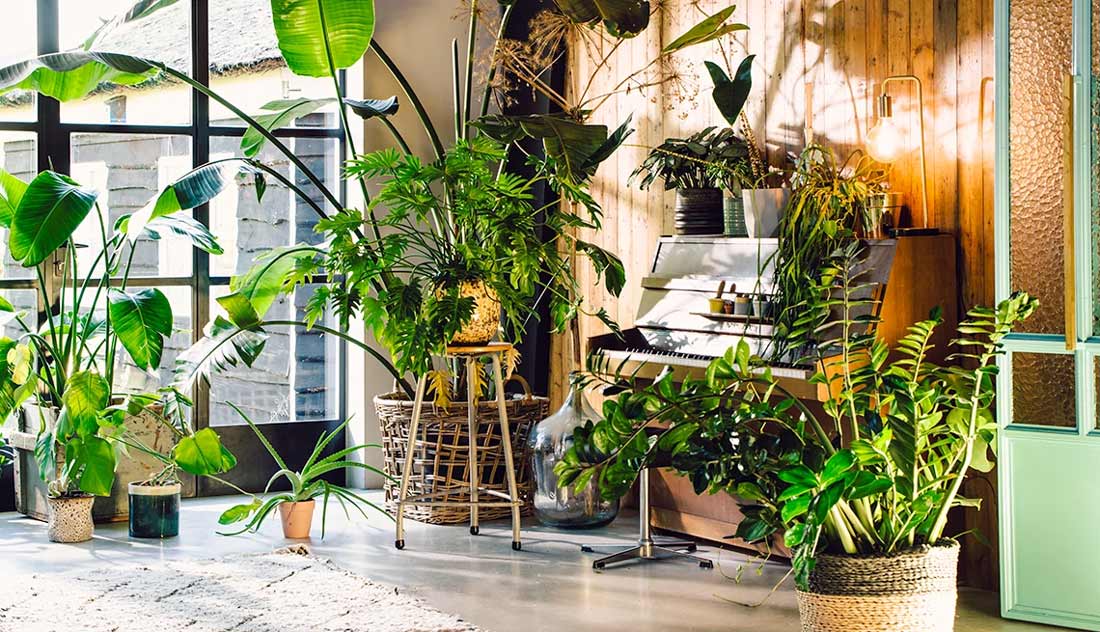
plants-large-furnishings
Choosing the Right Plants for Your Space
Choosing the right plants is crucial to ensure they thrive and complement your decor style. Here are some key considerations:
Low-Light Tolerant Plants
Not every home enjoys abundant natural light, so low-light plants are perfect for dim corners or rooms with limited windows. Examples include:
-
Snake Plant (Sansevieria): Hardy and almost indestructible, it can survive in low light and requires minimal watering.
-
ZZ Plant (Zamioculcas zamiifolia): Glossy leaves and tolerance to shade make it ideal for darker spaces.
-
Pothos: Known for trailing vines, pothos adapt well to low light and are easy to maintain.
Air-Purifying Plants
Certain plants are renowned for their ability to cleanse indoor air by removing toxins such as formaldehyde and benzene:
-
Spider Plant (Chlorophytum comosum): A classic air purifier with arching leaves and baby plantlets.
-
Peace Lily (Spathiphyllum): Elegant white blooms and excellent air-filtering properties.
-
Boston Fern: Adds lush greenery and helps increase humidity.
Plants for Specific Rooms
Different rooms have unique environments, so it’s important to choose plants suited for each space:
-
Bedrooms: Snake plants and peace lilies are perfect because they can improve air quality and don’t require bright light.
-
Kitchens: Herbs like basil, mint, and rosemary add greenery and practical use for cooking.
-
Living Rooms: Larger plants like fiddle leaf figs or monstera can become focal points.
Toxic Plants and Safety Tips
If you have pets or small children, be cautious with plants that may be toxic if ingested. Examples include:
-
Philodendron
-
Dieffenbachia (Dumb Cane)
-
Oleander
Always place such plants out of reach or opt for non-toxic alternatives.
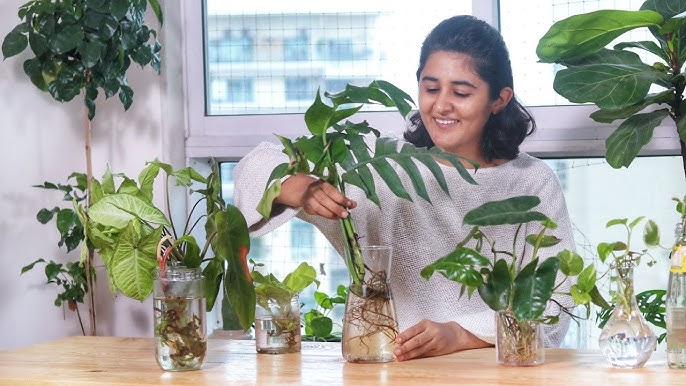
Incorporating Indoor Plants into Your Home Decor
Styling with Indoor Plants
Bringing indoor plants into your home decor is not just about choosing the right plants — it’s also about how you style and position them to enhance your space. Here are some creative and practical ideas for incorporating greenery beautifully into your home:
Using Decorative and Modern Pots
The pot or planter you choose plays a huge role in the overall aesthetic. Sleek, modern pots in materials like ceramic, concrete, or metal can add a minimalist touch, while colorful or patterned pots create a playful vibe. Consider matching your pots with your existing decor style to create harmony:
-
Scandinavian Style: Neutral-toned, simple pots in whites, grays, or pastels.
-
Boho Style: Earthy, textured pots made from terracotta or woven materials.
-
Industrial Style: Metallic or concrete planters with clean lines.
Combining Different Plants in Your Decor
Mixing plants with varied leaf shapes, colors, and sizes creates a dynamic and lush look. For example:
-
Tall plants like fiddle leaf figs can anchor a corner.
-
Medium-sized leafy plants like monsteras add volume.
-
Small trailing plants like pothos or string of pearls can cascade from shelves or hanging baskets.
Using plant stands or tiered shelves helps display multiple plants in an organized and visually appealing way.
Terrariums and Hanging Planters
For a trendy, space-saving option, terrariums — glass containers housing small plants — add a modern, artistic element to any table or shelf. They are perfect for succulents or air plants.
Hanging planters are fantastic for small spaces or to add greenery at eye level without taking up floor space. Macrame hangers or sleek geometric metal frames can add extra style.
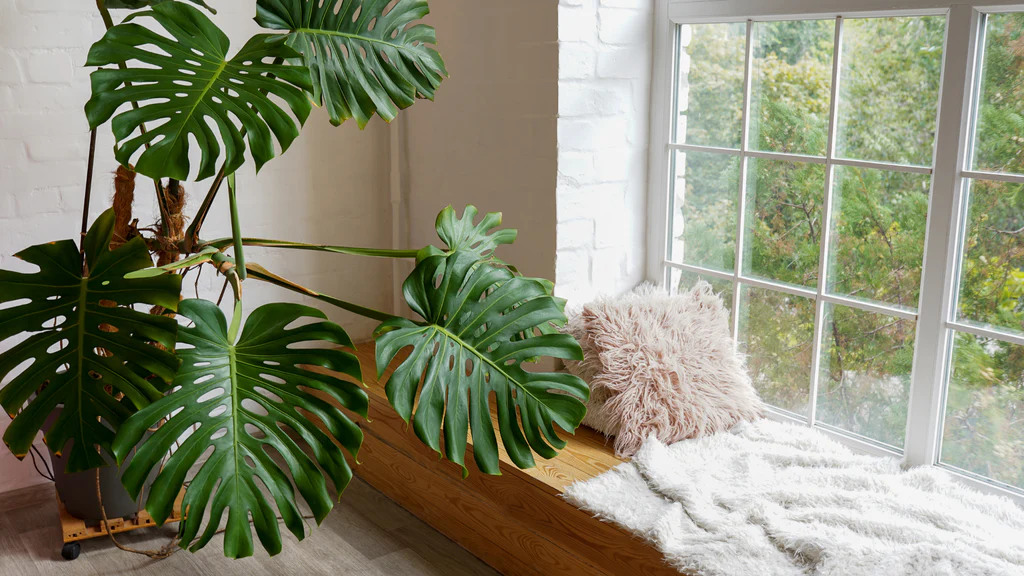
Incorporating Indoor Plants into Your Home Decor
Placing Plants in Small and Large Spaces
Even in compact apartments, you can successfully incorporate plants by:
-
Using vertical wall-mounted planters or shelves.
-
Placing small pots on windowsills or countertops.
-
Using multipurpose furniture with built-in planters.
In larger rooms or houses, bigger statement plants and grouped arrangements create focal points and help define areas within an open floor plan.
Care Tips for Healthy Indoor Plants
1. Understanding Your Plant’s Lighting Needs
One of the most crucial factors for the health and growth of indoor plants is ensuring they receive the proper light. Light is the energy source for photosynthesis—the process by which plants convert light into the food they need to thrive. However, not all plants require the same amount or type of light, and placing a plant in the wrong lighting condition can quickly lead to stress, poor growth, or even death.
Types of Light: Direct, Indirect, and Low Light
-
Direct Light: This is sunlight that shines straight on the plant, often through a window. Plants that require direct light, such as succulents and cacti, need several hours of strong sunlight daily. However, too much direct sunlight can scorch delicate leaves.
-
Indirect Light: Many plants thrive best in bright but indirect light, where sunlight is filtered through curtains or bounced off walls. Examples include pothos, spider plants, and peace lilies.
-
Low Light: Some plants can survive and even thrive in low-light conditions, where little natural sunlight reaches the plant. Snake plants and ZZ plants are prime examples. These plants are excellent choices for offices, bathrooms, or rooms with few windows.
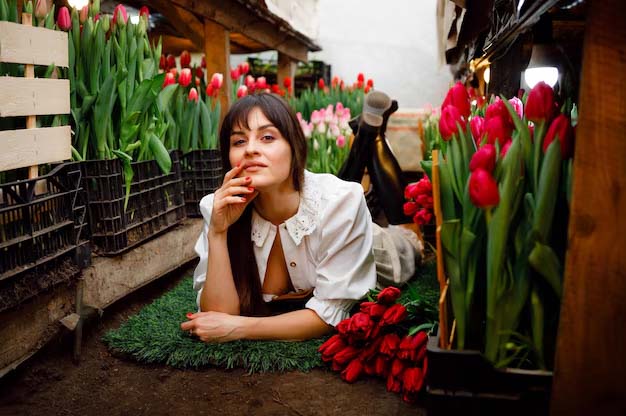
netherlands-march-gardener-home-greenhouse-with-tulips-black-boots-green-grass-sexy-girl
How to Identify Your Plant’s Light Requirements
-
Check plant labels or care guides: Most nurseries and plant sellers provide light requirement information.
-
Observe the plant’s natural habitat: Tropical understory plants usually tolerate lower light, while desert plants need bright light.
-
Watch for signs of stress: Leggy growth, pale leaves, or slow growth can indicate insufficient light, while scorched leaves or brown spots often mean too much direct sun.
Tips for Adjusting Lighting in Your Home
-
Rotate plants regularly: To ensure even light exposure and growth.
-
Use sheer curtains: Filter harsh sunlight for plants needing indirect light.
-
Supplement with grow lights: LED grow lights can provide the right spectrum and intensity when natural light is insufficient, especially in winter months.
-
Place plants near windows: South- or east-facing windows generally offer the best natural light indoors.
Care Tips for Healthy Indoor Plants (Continued)
4. Fertilizing and Feeding Your Plants
Proper feeding is essential to keep your indoor plants vibrant, lush, and growing well. Unlike outdoor plants, indoor plants are confined to limited soil, which gradually loses nutrients. Fertilizing replenishes essential minerals and promotes strong root and foliage development.
Types of Fertilizers
-
Organic Fertilizers: Derived from natural sources such as compost, bone meal, or fish emulsion. They release nutrients slowly and improve soil health over time. Examples include worm castings and seaweed extracts.
-
Synthetic Fertilizers: Manufactured chemically, these provide readily available nutrients for quick absorption. They often come in balanced formulations like 10-10-10 (nitrogen-phosphorus-potassium). Use with caution to avoid over-fertilizing.
When and How to Fertilize
-
Most indoor plants benefit from fertilization during their active growing season (spring and summer). Reduce or stop feeding in fall and winter when growth slows.
-
Follow manufacturer instructions carefully for dosage and frequency. Over-fertilizing can cause nutrient burn, damaging roots and leaves.
-
Apply liquid fertilizer diluted in water for quick absorption, or use slow-release pellets mixed into soil.
-
Some plants like orchids or succulents require specialized fertilizers tailored to their unique needs.
Common Feeding Mistakes to Avoid
-
Over-fertilizing: Leads to salt buildup, root damage, and leaf burn.
-
Fertilizing dry soil: Always water plants before feeding to prevent root shock.
-
Ignoring plant-specific needs: Different plants have varying nutrient requirements.
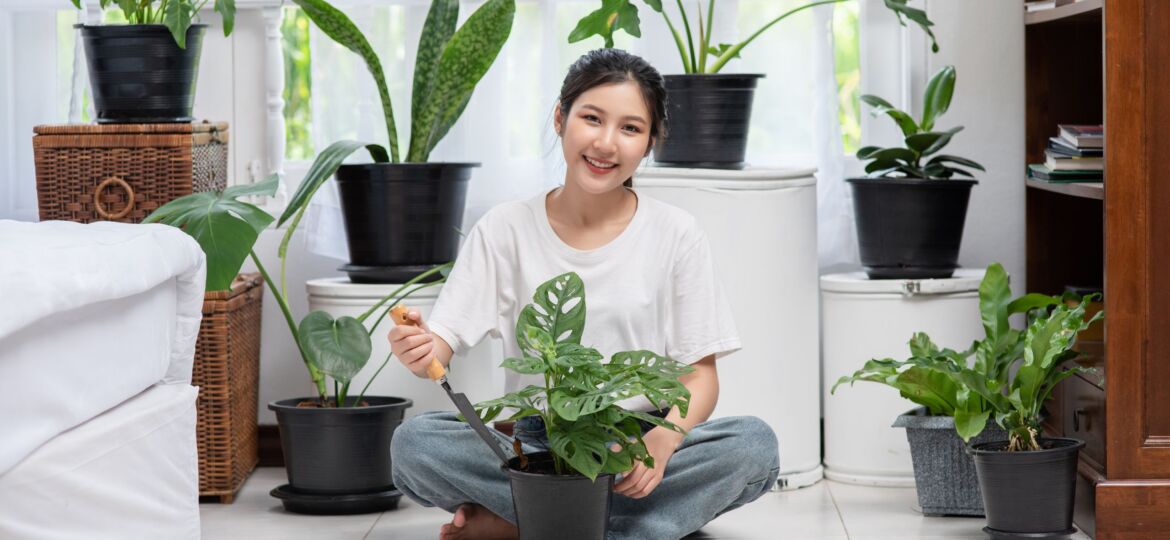
cute girl with plants smiling
5. Repotting and Soil Care
Indoor plants eventually outgrow their pots or the soil becomes compacted and depleted of nutrients. Repotting refreshes the soil, provides room for roots, and can prevent root rot.
Signs Your Plant Needs Repotting
-
Roots growing out of drainage holes or circling the pot’s surface
-
Soil dries out rapidly after watering
-
Plant growth slows or becomes stunted
-
Yellowing leaves or overall decline in health
Choosing the Right Soil and Pot Size
-
Use well-draining potting mix suitable for your plant type; for example, cactus soil for succulents, peat-based mixes for tropical plants.
-
Choose a pot 1-2 inches larger in diameter than the current one to give roots space without overwhelming the plant.
-
Ensure pots have drainage holes to prevent waterlogging.
Step-by-Step Repotting Guide
-
Water the plant a day before repotting to ease root removal.
-
Gently remove the plant from its pot, loosening roots carefully.
-
Trim any dead or rotted roots with sterilized scissors.
-
Place fresh soil in the new pot and position the plant at the correct depth.
-
Fill around roots with soil, firm lightly, and water thoroughly.
-
Avoid fertilizing immediately after repotting to let roots recover.
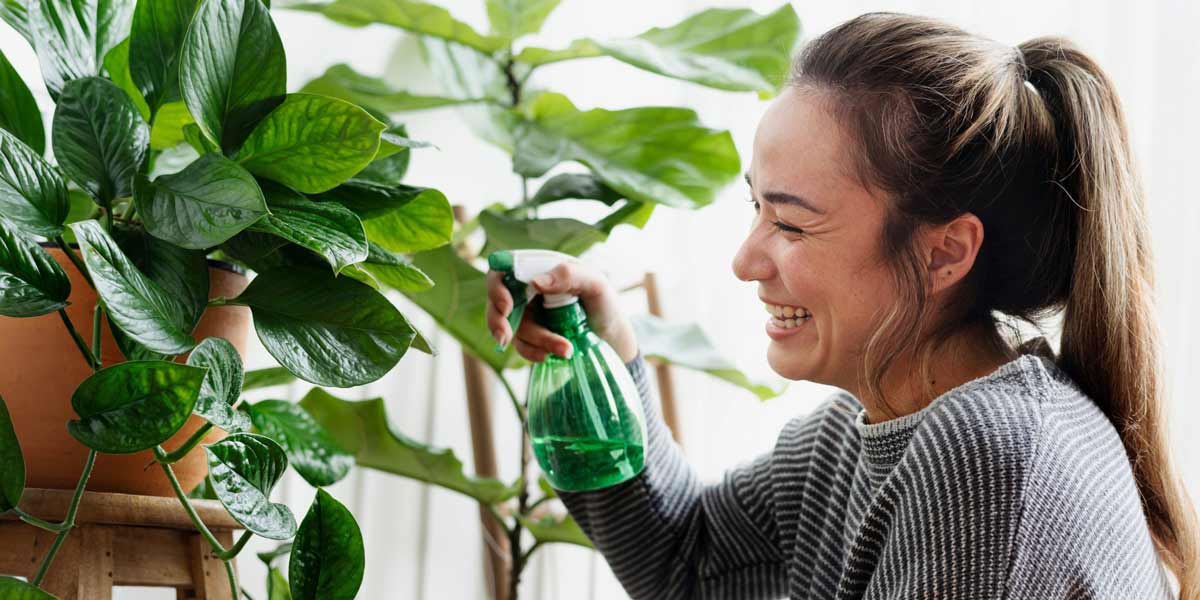
Incorporating Indoor Plants into Your Home Decor
Care Tips for Healthy Indoor Plants (continued)
2. Watering Your Indoor Plants Properly
Water is the lifeblood of plants, but both too much and too little can be harmful. Understanding your plant’s specific watering needs is essential to avoid common mistakes.
Signs of Overwatering and Underwatering
-
Overwatering: Yellowing leaves, mushy stems, root rot, moldy soil surface.
-
Underwatering: Dry, brittle leaves, leaf drop, soil pulling away from the pot edges.
Best Watering Schedules for Different Plant Types
-
Succulents and Cacti: Water sparingly — usually once every 2-3 weeks, allowing soil to dry out completely between watering.
-
Tropical Foliage Plants: Water when the top inch of soil feels dry, typically once a week.
-
Ferns and Mosses: Prefer consistently moist soil; water 2-3 times a week or more, depending on humidity.
Tips for Watering Techniques and Water Quality
-
Use room temperature water to avoid shocking roots.
-
Water deeply until it drains out of the bottom holes, then discard excess water to prevent root rot.
-
Avoid tap water high in chlorine or fluoride — use filtered, distilled, or rainwater if possible.
-
Consider self-watering pots or hydroponic systems for busy lifestyles.

Incorporating Indoor Plants into Your Home Decor
3. Temperature and Humidity Requirements
Indoor plants are sensitive to temperature fluctuations and humidity levels. Creating a stable environment mimicking their natural habitat supports healthy growth.
Ideal Temperature Ranges for Common Indoor Plants
-
Most indoor plants thrive between 65°F to 75°F (18°C to 24°C) during the day and slightly cooler at night.
-
Avoid placing plants near cold drafts, radiators, or heating vents which cause stress.
-
Tropical plants like peace lilies and palms prefer warmer temperatures and consistent warmth.
How Humidity Affects Plants
-
Higher humidity reduces water loss from leaves, keeping plants hydrated and lush.
-
Dry air (common in heated or air-conditioned rooms) causes leaf browning and curling.
Ways to Increase Humidity Indoors
-
Group plants together to create a microclimate with higher moisture.
-
Use humidifiers to maintain 40-60% humidity levels.
-
Place water trays or pebble trays filled with water beneath pots (without the pot sitting directly in water).
-
Mist leaves regularly, especially for tropical plants.
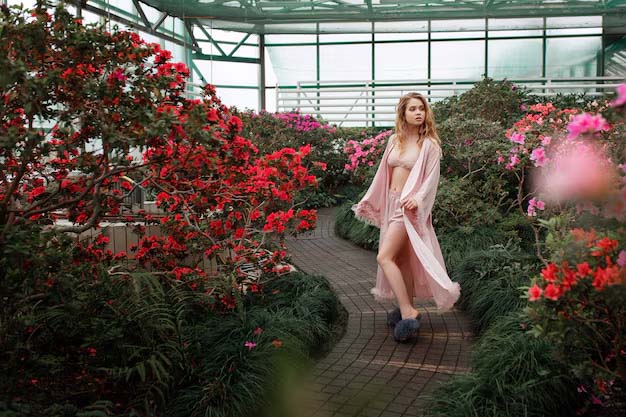
beautiful-sexy-girl-wearing-pink-bathrobe-lingerie-standing-flower-garden_8353-8398
Table 1: Common Pot Sizes and Cost Range (USD)
| Pot Size (Diameter) | Material | Price Range | Notes |
|---|---|---|---|
| 4–6 inches | Plastic | $3 – $8 | Lightweight, budget-friendly |
| Ceramic | $10 – $20 | Decorative, heavier | |
| Terracotta | $8 – $15 | Porous, good drainage | |
| 7–9 inches | Plastic | $7 – $15 | |
| Ceramic | $15 – $30 | ||
| Terracotta | $12 – $25 | ||
| 10–12 inches | Plastic | $12 – $25 | |
| Ceramic | $25 – $50 | ||
| Terracotta | $20 – $40 | ||
| 13–16 inches | Plastic | $20 – $40 | |
| Ceramic | $40 – $80 | ||
| Terracotta | $35 – $70 | ||
| 17+ inches | Plastic | $35 – $60 | |
| Ceramic | $70 – $150 | Premium decorative pots | |
| Terracotta | $60 – $130 | Heavy, ideal for large plants |
Table 2: Potting Soil Types and Prices per 1 Cubic Foot Bag (USD)
| Soil Type | Brand Examples | Price Range | Best For |
|---|---|---|---|
| General Purpose Mix | Miracle-Gro, Espoma | $8 – $15 | Most houseplants |
| Succulent & Cactus Mix | Hoffman, Black Gold | $10 – $18 | Succulents, cacti |
| Orchid Mix | Bark-based, Sunshine Mix | $15 – $28 | Orchids |
| Peat Moss-based Mix | FoxFarm, Black Gold | $12 – $20 | Tropical plants |
| Organic Mix | Espoma Organic, Dr. Earth | $18 – $30 | Chemical-free, eco-friendly |
Table 3: Fertilizer Types and Costs (per unit)
| Fertilizer Type | Brand Examples | Price Range | Recommended Use |
|---|---|---|---|
| Synthetic Liquid Fertilizer | Miracle-Gro, Jobe’s | $7 – $18 per 16 oz | Fast absorption, general use |
| Organic Liquid Fertilizer | Dr. Earth, Neptune’s | $12 – $25 per 16 oz | Safer for indoor use, slow feed |
| Slow-Release Granules | Osmocote, Jobe’s | $15 – $30 per 4 lb | Long-term nutrient supply |
| Specialized Fertilizers | Schultz Orchid Food | $20 – $40 per 8 oz | Specific plant types (orchids, succulents) |
Table 4: Pruning Tools and Costs (USD)
| Tool Type | Brand Examples | Price Range | Description |
|---|---|---|---|
| Basic Pruning Shears | Fiskars, Corona | $10 – $25 | For light trimming |
| Precision Trimmers | Felco, Gonicc | $20 – $45 | For delicate pruning |
| Electric Pruners | Black+Decker, Greenworks | $50 – $120 | For larger pruning jobs |
| Sterilizing Solution | Isopropyl alcohol, Lysol | $5 – $15 | To clean tools and prevent disease |
| Gardening Gloves | Atlas, Magid | $8 – $20 | Protect hands |
Table 5: Additional Indoor Plant Care Supplies
| Supply Item | Brand Examples | Price Range | Use Case |
|---|---|---|---|
| Humidifiers | Levoit, TaoTronics | $25 – $150 | Maintain humidity |
| Grow Lights (LED) | Roleadro, Spider Farmer | $30 – $200 | Supplement light for growth |
| Self-watering Pots | Lechuza, Bloem | $15 – $50 | Easy watering |
| Moisture Meters | XLUX, Dr.meter | $10 – $35 | Measure soil moisture accurately |
| Pest Control Products | Safer Brand, Bonide | $8 – $25 | Manage indoor pests |
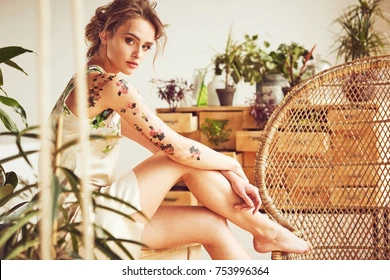
portrait-beautiful-young-sexy-woman-260nw-753996364
Part 2 of tables:
Table 1: Common Pot Sizes, Materials, and Cost Breakdown (USD)
| Pot Size (Diameter) | Material | Price Range | Durability & Use | Buying Tips |
|---|---|---|---|---|
| 4–6 inches | Plastic | $3 – $8 | Lightweight, best for small succulents & herbs | Look for UV-resistant plastic for longevity |
| Ceramic | $10 – $20 | Decorative, good for medium plants, heavier | Check for glazed finish to avoid water seepage | |
| Terracotta | $8 – $15 | Porous, excellent drainage but fragile | Ideal for cacti & succulents; avoid freezing temps | |
| 7–9 inches | Plastic | $7 – $15 | Affordable, versatile | Ensure drainage holes; matching saucers helpful |
| Ceramic | $15 – $30 | Stylish, heavier, less likely to tip over | Good for living rooms, patios | |
| Terracotta | $12 – $25 | Natural look, good air circulation | Can absorb moisture, so water accordingly | |
| 10–12 inches | Plastic | $12 – $25 | Great for larger indoor plants | Pick recycled plastic options for eco-friendly |
| Ceramic | $25 – $50 | Elegant, heavier; supports bigger plants | Choose wide base for stability | |
| Terracotta | $20 – $40 | Breathable soil environment | Avoid overwatering to prevent cracking | |
| 13–16 inches | Plastic | $20 – $40 | Best for indoor trees or large plants | Choose pots with handles for easier moving |
| Ceramic | $40 – $80 | Premium look, sturdy | Invest in decorative pots for statement pieces | |
| Terracotta | $35 – $70 | Heavy, good insulation for roots | Layer with gravel for drainage | |
| 17+ inches | Plastic | $35 – $60 | Budget-friendly for large plants | Use lightweight plastic for easier repositioning |
| Ceramic | $70 – $150 | High-end, ornamental | Match pot style with room decor | |
| Terracotta | $60 – $130 | Durable but heavy, good for big plants | Use pot feet to avoid floor damage |
Table 2: Potting Soil Types with Characteristics & Cost (per 1 cu ft)
| Soil Type | Price Range | Ideal Plants | Key Components | Buying Tips |
|---|---|---|---|---|
| General Purpose Mix | $8 – $15 | Most houseplants, easy to use | Peat moss, perlite, vermiculite | Choose brands with balanced pH (~6-7) |
| Succulent & Cactus Mix | $10 – $18 | Succulents, cacti | Sand, perlite, coarse soil | Avoid moisture-retaining soils |
| Orchid Mix | $15 – $28 | Epiphytic orchids | Bark chips, charcoal, sphagnum | Buy fresh mix; avoid compacted bags |
| Peat Moss-based Mix | $12 – $20 | Tropical plants, moisture lovers | Peat moss, compost | Ensure sustainable peat sourcing |
| Organic Mix | $18 – $30 | Chemical-free gardening | Compost, worm castings, peat | Look for OMRI-certified organic products |
Table 3: Fertilizers with Use, Cost, and Application Tips
| Fertilizer Type | Price Range | Use Frequency | Pros & Cons | Application Tips |
|---|---|---|---|---|
| Synthetic Liquid Fertilizer | $7 – $18 per 16 oz | Every 1-2 weeks | Fast-acting, precise control | Dilute per label; avoid overfeeding |
| Organic Liquid Fertilizer | $12 – $25 per 16 oz | Every 2-3 weeks | Safer, improves soil health | Best used during growing season |
| Slow-Release Granules | $15 – $30 per 4 lb | Every 3-6 months | Low maintenance, steady nutrients | Mix into topsoil during repotting |
| Specialized Fertilizers | $20 – $40 per 8 oz | Plant-specific | Tailored nutrient ratios | Follow exact instructions for best results |
Table 4: Pruning Tools, Usage, and Maintenance Costs
| Tool Type | Price Range | Best For | Maintenance Tips |
|---|---|---|---|
| Basic Pruning Shears | $10 – $25 | General pruning | Clean blades after use, sharpen regularly |
| Precision Trimmers | $20 – $45 | Small branches, shaping | Use disinfectant to prevent disease spread |
| Electric Pruners | $50 – $120 | Heavy pruning, larger plants | Charge battery fully; avoid moisture contact |
| Sterilizing Solution | $5 – $15 | Tool disinfection | Use before and after pruning |
| Gardening Gloves | $8 – $20 | Hand protection | Wash regularly, replace when torn |
Table 5: Additional Supplies for Indoor Plant Care (Benefits & Price)
| Supply Item | Price Range | Benefits | Usage Tips |
|---|---|---|---|
| Humidifiers | $25 – $150 | Prevent dry air damage | Use in dry climates or heated rooms |
| Grow Lights (LED) | $30 – $200 | Boost photosynthesis indoors | Choose full spectrum, position properly |
| Self-watering Pots | $15 – $50 | Maintain consistent moisture | Best for busy people or travel |
| Moisture Meters | $10 – $35 | Prevent over/under watering | Test soil moisture before watering |
| Pest Control Products | $8 – $25 | Manage common indoor pests | Choose non-toxic, plant-safe options |
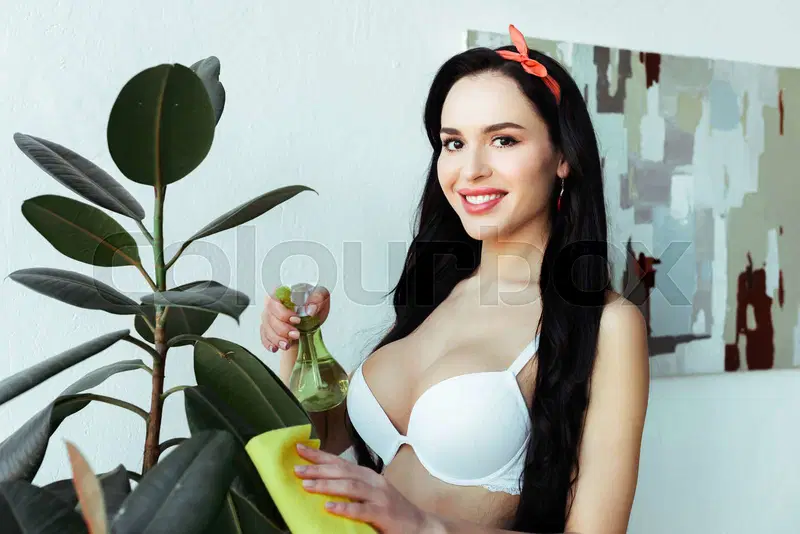
portrait-beautiful-young-sexy-woman
FAQ: Incorporating Indoor Plants into Your Home Decor
1. What are the best indoor plants for beginners?
Answer:
Some of the best indoor plants for beginners include Snake Plant (Sansevieria), Pothos, ZZ Plant, Spider Plant, and Peace Lily. These plants are hardy, require low maintenance, and adapt well to different indoor lighting conditions, making them perfect for those new to indoor gardening.
2. How often should I water my indoor plants?
Answer:
Watering frequency depends on the plant species, pot size, soil type, and indoor climate. Generally, most indoor plants need watering every 1–2 weeks. It’s best to check soil moisture with your finger or a moisture meter; water only when the top inch of soil feels dry to avoid overwatering, which can lead to root rot.
3. Can indoor plants improve air quality?
Answer:
Yes! Many indoor plants such as Spider Plants, Snake Plants, and Boston Ferns are known for their air-purifying qualities. They absorb toxins like formaldehyde and benzene while releasing oxygen, which helps improve indoor air quality and overall well-being.
4. What types of pots are best for indoor plants?
Answer:
Pots made of terracotta are excellent for breathability and moisture regulation, especially for succulents and cacti. Ceramic pots provide a decorative touch and good insulation but are heavier. Plastic pots are lightweight and affordable but ensure they have drainage holes to prevent waterlogging.
5. How do I choose the right location for my indoor plants?
Answer:
Consider the natural light your space receives. South-facing windows offer bright, direct light suitable for sun-loving plants, while north-facing windows provide low light ideal for shade-tolerant species. Avoid placing plants in drafty or extremely dry spots, such as near heaters or air conditioners.
6. How can I prevent common indoor plant pests?
Answer:
Regularly inspect your plants for signs of pests like spider mites, aphids, or mealybugs. Keep plants clean by wiping leaves and removing dead foliage. If pests appear, use insecticidal soap or neem oil, which are safe for indoor plants. Quarantine new plants before introducing them to your collection to avoid infestations.
7. Are grow lights necessary for indoor plants?
Answer:
Grow lights are beneficial if your indoor environment lacks sufficient natural light, especially in winter or rooms with small windows. Full-spectrum LED grow lights mimic sunlight and promote healthy photosynthesis, ensuring your plants thrive even in low-light conditions.
8. How often should I fertilize my indoor plants?
Answer:
Most indoor plants benefit from fertilizing every 4–6 weeks during their active growing season (spring and summer). Use a balanced, water-soluble fertilizer diluted to half strength. Avoid fertilizing during the dormant period (fall and winter) when plant growth slows down.
9. Can indoor plants help reduce stress and improve mood?
Answer:
Yes, studies show that indoor plants can reduce stress, improve mood, and boost productivity. Their presence creates a calming atmosphere, enhances creativity, and fosters a connection with nature—important for mental well-being, especially in urban living environments.
10. What are some cost-effective ways to care for indoor plants?
Answer:
To save costs, propagate plants from cuttings, use homemade compost or organic fertilizers, recycle pots, and choose hardy species that require less water and care. Using self-watering pots and moisture meters can prevent costly mistakes like overwatering or plant loss.

stunning-sexy-brunette-beauty-garden-600w-1223887609
Final Thoughts & Recommended Resources
Bringing indoor plants into your home decor is a timeless way to enhance your living environment, combining beauty, health benefits, and a touch of nature’s tranquility. As you embark on this green journey, remember that every home and lifestyle is unique—there’s no one-size-fits-all approach. Experiment with different plants, placements, and care routines until you find the perfect balance that suits you.
To further support your indoor gardening adventures, here are some highly recommended resources:
-
Books:
“The Indoor Plant Handbook” by Jennie Harding — a comprehensive guide to choosing and caring for indoor plants.
“How Not to Kill Your Houseplant” by Veronica Peerless — practical tips for plant beginners. -
Websites:
The Sill — expert advice and plant care tips.
Houseplant Journal — detailed care guides and inspiration. -
YouTube Channels:
Plant One On Me — practical tutorials and plant care advice.
Summer Rayne Oakes — creative ideas for stylish indoor gardens.
Embrace your green thumb with confidence, and transform your home into a living masterpiece that refreshes your soul every day. The beauty of indoor plants lies not only in their leaves but in the joy and peace they bring into your life.
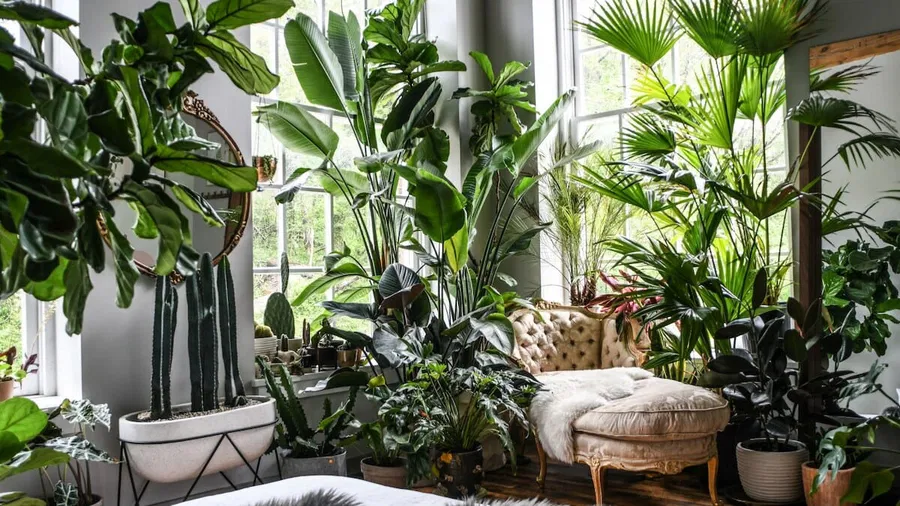
fantastic house with green plants
New Article Ideas for 2026 in Home Decor & Design
-
Smart Homes, Smarter Decor: Integrating AI and IoT with Interior Design
Explore how artificial intelligence and smart devices are transforming home aesthetics and functionality. -
Eco-Chic 2026: Sustainable Materials and Designs Shaping Modern Homes
Highlight the latest innovations in eco-friendly, sustainable home decor materials and styles. -
Biophilic Design Beyond Plants: Using Natural Elements to Boost Wellbeing Indoors
Go beyond plants to include water features, natural light manipulation, and organic textures in design. -
Minimalism Meets Maximalism: Hybrid Home Decor Trends for 2026
Analyze how blending minimalist and maximalist elements can create balanced, personalized spaces. -
The Rise of Modular and Multifunctional Furniture in Compact Living Spaces
Showcase flexible furniture solutions designed for urban living and small apartments. -
Color Forecast 2026: Top Palettes to Refresh Your Home This Year
Reveal trending color schemes based on industry forecasts and psychological impacts. -
Digital Art and Home Decor: Incorporating NFTs and Virtual Galleries in Physical Spaces
Discuss how digital art pieces and NFTs are influencing home decoration choices. -
Healing Spaces: Designing Home Interiors to Support Mental Health and Mindfulness
Focus on design principles that promote relaxation, focus, and emotional well-being. -
From Vintage to Futuristic: Timeless Decor Elements Reimagined for 2026
Explore how classic styles are being reinvented with modern technology and materials. -
2026 Lighting Trends: Smart, Sustainable, and Artistic Illumination Ideas
Highlight innovative lighting designs that combine energy efficiency with artistic flair.
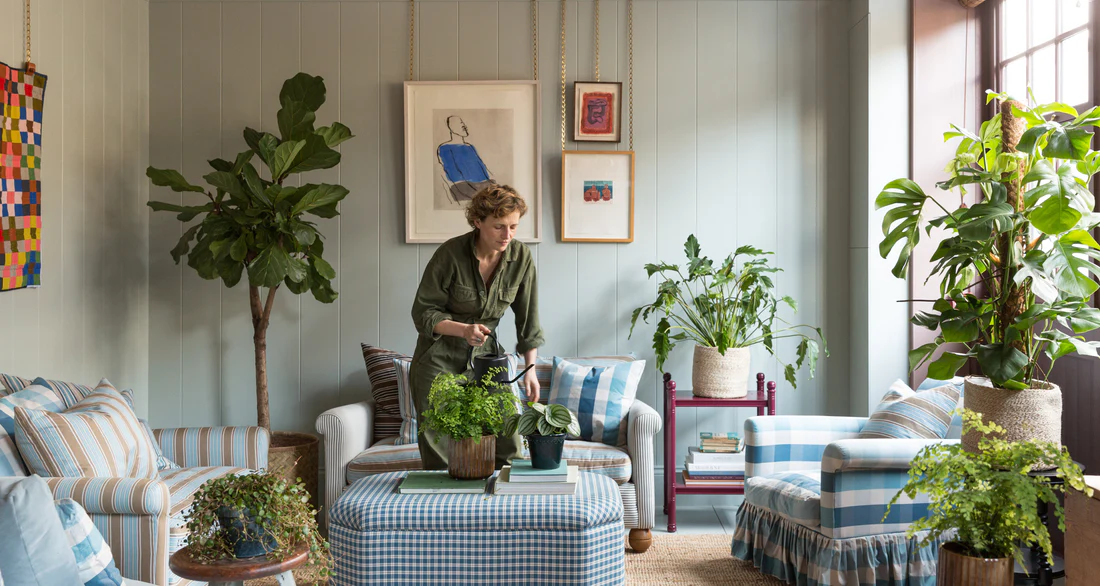
CrocusNicolaHardingJan2024-2-LowRes-
What to Do in the Future (Next 1–5 Years) for Your Home Decor & Design Site
-
Stay Ahead with Trend Research
Continuously monitor emerging design trends, new materials, and tech innovations (like smart home integration). Use tools like Google Trends, Pinterest insights, and design magazines to spot hot topics early. -
Diversify Content Formats
Add videos, podcasts, interactive guides, and virtual room planners alongside written articles to engage wider audiences. Collaborate with influencers and experts for credibility and reach. -
Deepen SEO & Content Quality
Keep following your “khafanus” standards: long-form, deeply researched, humanized, and SEO-optimized content. Update older articles regularly with fresh data, new visuals, and current links. -
Build a Community
Create forums, social media groups, or newsletters where your audience can share ideas, ask questions, and get personalized advice. This boosts loyalty and repeat visits. -
Monetize Smartly
Use affiliate marketing with trusted home decor brands, sponsored content, and digital product sales like e-books or design templates. -
Expand Topic Coverage
Explore adjacent categories like smart homes, wellness-focused interiors, DIY projects, or eco-friendly living to attract diverse visitors. -
Leverage Data and Feedback
Use analytics and reader feedback to understand which topics and content types perform best, then tailor your strategy accordingly. -
Offer Personalization
Incorporate AI tools or quizzes that recommend decor styles, plants, or furniture based on user preferences.
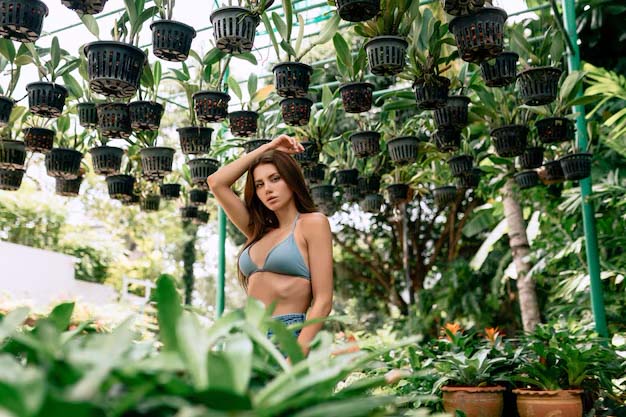
cute-seductive-young-girl-sexy-top-with-blue-eyes-posing-green-garden-with-hanging-green-pots-plants-outdoors_120960-1528
Conclusion
Incorporating indoor plants into your home decor is much more than just a design trend—it’s a transformative lifestyle choice that brings vitality, freshness, and a sense of calm to your living space. From the lush greenery that purifies the air to the vibrant bursts of color that uplift your mood, plants create a unique harmony between nature and your personal style.
Whether you’re a seasoned plant parent or just starting your indoor garden journey, the right combination of pots, soils, lighting, and care techniques can help your plants thrive and become a beautiful extension of your home’s aesthetic. By choosing plants that match your lifestyle, space, and design preferences, you’re not only enhancing your environment but also investing in your well-being and happiness.
Remember, nurturing indoor plants is a rewarding process—each leaf and bloom reflects your attention and creativity. So, embrace the green magic, experiment with new species, and let your home flourish naturally. With the tips, cost breakdowns, and expert advice shared in this guide, you’re fully equipped to create an indoor oasis that feels fresh, vibrant, and truly yours.
Start today, and watch how a simple plant can bring big changes to your home—and your life.
The world of Home Decor & Design is vast and ever-changing—but with your relentless focus and expert guidance, you will dominate the space, inspire millions, and leave an unforgettable legacy.
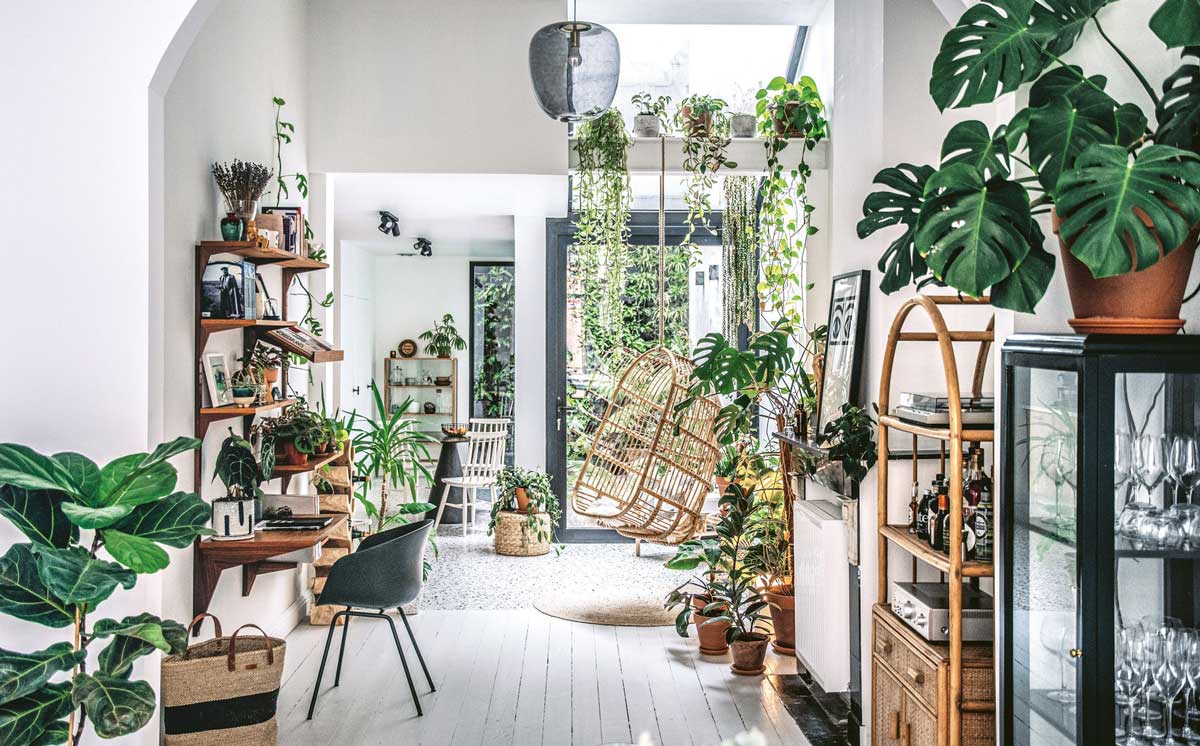
fantastic house with green plants


